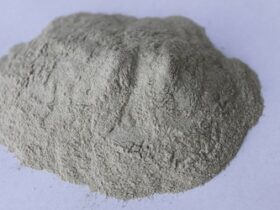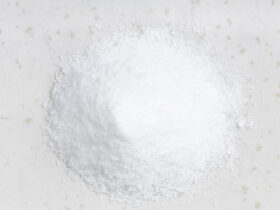Maintaining a pool or spa can come with many hardships. Supply chain disruptions have also put kinks in getting the materials you need. With a few simple commodity chemicals, you can treat many different problems with your pool or spa that deal with adjusting pH, water hardness, alkalinity, or staining.
Soda Ash
Soda Ash, or Sodium Carbonate, is an inorganic compound that yields moderately alkaline solutions. It is also sometimes referred to as washing soda or soda crystals. Historically, soda ash was extracted from the ashes of plants that grew in sodium-rich soils, hence the name soda ash. About half of all Soda Ash around the globe is consumed by the glass industry. Soda ash is also widely used in detergents and other cleaning products.
Soda Ash is used most commonly in pools and spas to raise the pH of the water. Since it is impossible to raise the pH without raising alkalinity, Soda Ash will also raise the alkalinity of the water as well. Soda Ash is sometimes sold as “pH increaser” in pool supply stores. When you need to make a big pH change or need to raise the pH and the alkalinity, soda ash is the best choice. The desired alkalinity levels in a pool or spa should be in the range of 80-150 ppm. The desired pH level in a pool or spa should be in the range of 7.2 – 7.6. As a general rule, about 6oz of Soda Ash in a 10,000 gallon pool will raise the pH level by 0.2.
To add Soda Ash to your pool, measure the amount needed and put it into a bucket. Add water to that bucket with the Soda Ash and make sure that all the Soda Ash is fully dissolved in the water. After it has dissolved, walk around your pool or spa while pouring the solution into the water, avoiding the filters. Undissolved Soda Ash, too much Soda Ash, or adding Soda Ash and Calcium Chloride at the same time can cause cloudy water.
Sodium Bicarbonate
Sodium Bicarbonate, or Baking Soda, is a cost-effective and non-toxic way to raise the alkalinity of your pool or spa. Sodium Bicarbonate is naturally alkaline with a pH of 8. It is used in many different applications like baking, neutralization of acids, pyrotechnics, agriculture, cleaning agent, odor control, and many more!
Low alkalinity and pH in a pool can cause discomfort for swimmers as well as corrosion on things like ladders or liners. Ideally, the alkalinity for a pool is between 110-150 ppm while the ideal pH is between 7.2 – 7.8. A general rule is that 1.5lbs of Sodium Bicarbonate for every 10,000lbs of water will raise the alkalinity by 10ppm.
To add Sodium Bicarbonate to your pool, measure the amount needed and put it into a bucket. Add water to that bucket with the Sodium Bicarbonate and make sure that all the Sodium Bicarbonate is fully dissolved in the water. After it has dissolved, walk around your pool or spa while pouring the solution into the water, avoiding the filters.
Sodium Thiosulfate
Sodium Thiosulfate is an inorganic compound that is efflorescent (loses water readily) and dissolves well in water. It is used in many different applications like gold mining, water treatment, photography, and leather tanning. It is especially useful in pool and spa treatment because it is a very effective dechlorination agent.
Too much chlorine in a pool can create a less-than-pleasant experience for a swimmer. Because it alters the pH level in the pool, making it more acidic, that can cause skin sensitivity, itchy eyes, and even lung irritation.
Sodium Thiosulfate removes free and combined (chloramines) chlorine from pools. Ideally, chlorine levels in your pool should be in the range of 2-4ppm. As a general rule, about 2oz of Sodium Thiosulfate for every 10,000 gallons of water will lower chlorine levels by about 1ppm.
Calcium Chloride
Calcium Chloride is an inorganic compound that is highly soluble in water. In fact, Calcium Chloride is very hydroscopic (attracting and holding water) and deliquescent (so hydroscopic that it will become liquid). Calcium Chloride also depresses the freezing point of water which makes it very useful in preventing ice formation and de-icing.
Water hardness is the amount of dissolved calcium and magnesium in the water. You should always test the hardness of your water before adding in any chemicals. A general rule is 2oz of Calcium Chloride for every 1,000 gallons of water will raise the water hardness 10ppm. Typical water hardness levels for a pool are between 200-400 ppm. If your water hardness levels are too low, the water in your pool will start extracting calcium wherever it can find it, like grout, concrete, or metal pieces. This calcium extraction can lead to corrosion.
To add Calcium Chloride to your pool, measure the amount needed and put it into a bucket. Add water to that bucket with the Calcium Chloride and make sure that all the Calcium Chloride is fully dissolved in the water. After it has dissolved, walk around your pool or spa while pouring the solution into the water, avoiding the filters.
Citric Acid
Citric Acid is a weak acid that is naturally occurring in citrus fruits. Because of this citric acid is considered much more environmentally friendly than other cleaning agents for pools. Citric Acid is also known as sour salt because of it’s sour taste. While used frequently in the food industry, citric acid is also widely used in cleaners for it’s ability to remove stains.
There are a few kinds of stains that can occur in pools and/or spas that appear as different colors. Copper stains appear blue, iron stains appear red, and calcium stains appear black. There are also stains that can be made by organic material like leaves. To get rid of these stains, an acid wash is an effective tool to use. To do an acid wash, your swimming pool or spa must be cleaned, all the debris removed, and drained. A wash with equal parts Citric Acid and water is prepared and applied to one area of the pool or spa at a time. After applying the wash, wait for 30 seconds before scrubbing the section with a brush to remove the stain. Be sure to rinse the section after scrubbing. Repeat the process for the entire pool or spa, making sure that a good final rinse gets rid of all the Citric Acid wash. If Citric Acid wash is left on too long, it can damage the surface by eating away too much.
Citric Acid can also be used as a simple pH adjuster. Citric Acid can be added to any pool or spa to lower the overall pH.
Diatomaceous Earth
Diatomaceous Earth is a naturally occurring, soft, siliceous sedimentary rock that it typically crumbled into a fine white powder. It is also sometimes just referred to as “DE Powder.” It is typically 80-90% silica, 2-4% alumina, and .5-2% iron oxide. Diatomaceous Earth consists of the fossilized remains of a type of micro algae called Diatoms. It has many uses in agriculture, pest control, construction, explosives, filtration, and more.
A DE filter for pools or spas is a filter that uses Diatomaceous Earth to filter out all kinds of micro-contaminants that are in your pool or spa. The DE Powder coats the grids of the filter, trapping all those micro-contaminants. This results in clearer water. Every time you backwash your filter, you need to replace the DE powder in your filter.
DE Filters in pools or spas are said to provide more clarity and cleaner water than traditional sand or cartridge filters, and it is all natural!
Ascorbic Acid
Ascorbic Acid is more commonly known as Vitamin C. It is an acidulant that functions as an antioxidant in many foods and beverages. Ascorbic Acid also is used in many applications, like pool maintenance, to get rid of stains caused by metals.
Metals like copper, iron, manganese, and calcium can all leave stains in your pool if the proper pH levels are not maintained. Ascorbic Acid is an easy, inexpensive way to safely remove those stains left by high concentrations of these metals.
You can apply Ascorbic Acid directly by rubbing ascorbic acid powder onto the stain, waiting for a few minutes to monitor the lightening, and repeating until the stain is gone. For larger stains, you can create a solution of Ascorbic Acid and water in a bucket and evenly distribute it around your pool. Circulate your pool water around for half an hour and then check on the stains. You can repeat this process for stubborn stains. Generally about 1/2lb of ascorbic acid for every 10,000 gallons of water. It is best to lower the chlorine level in your pool to about 2 ppm or lower before using ascorbic acid to get rid of stains.
You can find all 7 of these chemicals in convenient, easy-to-handle, perfectly priced 10lb bags at www.level7chemical.com!











